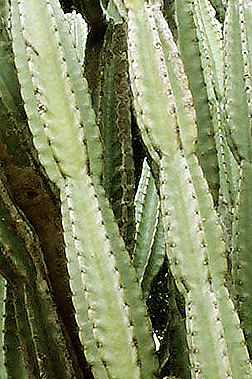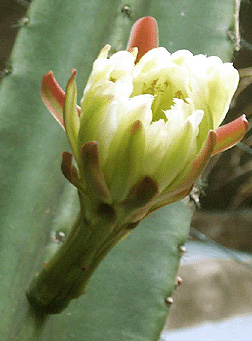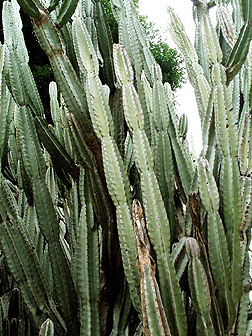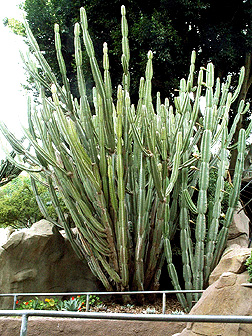 Virginia Tech Dendrology
Virginia Tech Dendrology
Andes organ pipe Cactaceae Cereus
hildmannianus K. Schum.
![]()
![]() symbol: CEHI3
symbol: CEHI3
Leaf: Reduced to a spine but often completely lacking spines, when present they are up to 2 inches, displayed in vertical rows along the bark ridges, areole clusters of 8 spines approximately 1 inch apart.
Flower: Attractive, white with a yellow center and pink petal tips, 6 inches across, blooming at night during midsummer, persisting for less than 24 hours.
Fruit: A cylindrical to oval berry, thornless, 2-3 inches, yellow to red, resembling an apple (another common name is "apple cactus".
Bark: A green, leathery thick skin with 5 to 8 prominent vertical ridges.
Form: Clustered, column-like branches sweeping upward from a central point, to 25 feet tall, clumps to 15 feet wide, individual stems approximately 6 inches.
Looks like: senita cactus
- organpipe cactus
Additional Range Information: Cereus hildmannianus is planted in the USDA hardiness zones shown above and is not known to widely escape cultivaton. Download the full-size PDF map.
External Links: USDA Plants Database
All material 2025 Virginia Tech Dept. of Forest Resources and Environmental Conservation; Photos and text by: John Seiler, Edward Jensen, Alex Niemiera, and John Peterson; Silvics reprinted from Ag Handbook 654; range map source information




